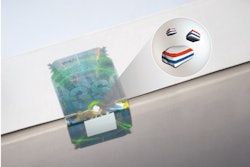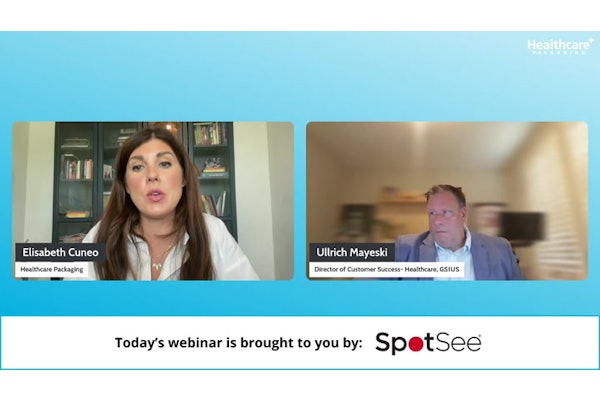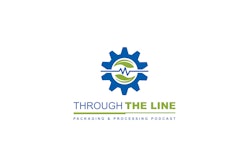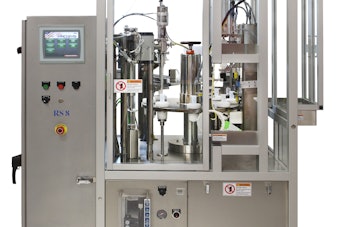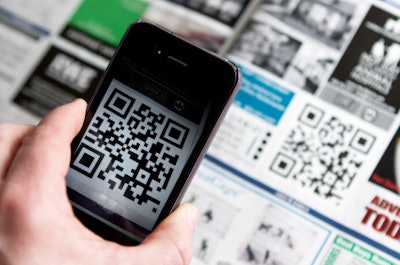
Pharmaceutical manufacturers, packaging suppliers, and technology companies continue to develop tools to battle counterfeiting around the globe. Information technology could serve as another tool to help protect the pharmaceutical supply chain, according to Scott A. Morris, director of the packaging program at the University of Illinois at Urbana-Champaign.
Morris believes, “The pharmaceutical industry looks at tracking pharmaceutical shipments from manufacturing through delivery as a complex and costly burden. I think they are truly beginning to realize, both because of legislative changes and because of issues related to viability and public exposure, that it's their company's name on the box. They need to be sure that product is getting where it's supposed to be going and that there is value in the information obtained along the way.”
He believes pharmaceutical firms “need to realize the huge opportunities that occur when you start looking at the larger picture. We use the term 'Informatics.' It's a look at what information is available from your manufacturing and distribution network that can help paint a larger picture. With the right data and analysis, you could find out how well your product is selling in some little corner of the world or how to sell it better to the whole world. You could spot upturns in consumption of antibiotics that indicate disease outbreaks and can potentially detect 'black holes' where the drugs are disappearing. It is also possible to identify new cost or time savings.”
Wikipedia says, “Health informatics (also called health care informatics, healthcare informatics, medical informatics, nursing informatics, or biomedical informatics) is a discipline at the intersection of information science, computer science, and health care. It deals with the resources, devices, and methods required to optimize the acquisition, storage, retrieval, and use of information in health and biomedicine. Health informatics tools include not only computers but also clinical guidelines, formal medical terminologies, and information and communication systems. It is applied to the areas of nursing, clinical care, dentistry, pharmacy, public health, occupational therapy, and (bio)medical research. The international standards on the subject are covered by ICS 35.240.80 in which ISO 27799:2008 is one of the core components.”
Global shipping complicates pharmaceutical distribution. Morris says, “From a university perspective, we're interested in larger-scale tracking and how systems integrate. For example, if we can find out who is getting a particular product in a geographic area, we can start to learn about the social systems, infrastructure, and economics of those areas.”
As reported in Healthcare Packaging, the mPedigree platform allows patients in Africa to use text messages on their smartphones to scan their packages and quickly determine if their product is authentic or not. Similar measures are being considered for domestic markets. “It's something that has to happen because even in the United States drugs can be diluted or counterfeit,” says Morris. “There is a phenomenon called 'lifting' where you basically take the existing packaging and refill it with something else, or you take the authentication 'token' such as a holographic label and apply it to a counterfeit product. This is not a new problem--it was a complaint that British patent medicine companies had against the colonial Americans before the Revolutionary War.”
“Now with systems like the Sproxil verification system used by mPedigree and elsewhere in Africa and India, you have a coding system with a scratch-off portion covering a code that the customer sends as a text message to the company for a return verification message. If the code doesn't match, you get a warning and if it's been scratched off, then it's likely that you're dealing with a second-hand package and you don't use it. There are also supply chain level systems that integrate with this. I know there are some security problems with that; it would be easy to print up a bunch of boxes with a phone number and fake the approval, but it's a step forward in that it keeps the casual counterfeiter down,” Morris believes.
Theft also a problem
Morris says, “Another problem is that pharmaceuticals are getting stolen wholesale. There was a theft last year in Connecticut where thieves simply rappelled in through the roof and drove a tractor trailer out with $75 million in product. I don't know how many millions of dollars worth of that ends up going back into the system, whether it's being sold into the black or grey markets, misrepresented, or sold overseas.” This points to vulnerabilities in the overall pharmaceutical distribution chain, and the inherent challenges related to pharmaceutical counterfeiting, diversion, and theft.
Morris believes pharmaceuticals are easy to counterfeit, that consumers have difficulty distinguishing authentic products from fakes, and of course, that pharmaceuticals have high financial value. “High-resolution information systems may offer a means of identifying stolen or diverted product,” he notes.
A similar example involving easily sold items took place earlier this spring, says Morris. He explains, “A group of people started a trucking company that showed up at a grocery wholesaler location with correct order manifests matching those that had been sent from a fictional company, picked up a trailer load of valuable fresh produce, and just disappeared. They still haven't been caught. There is no reason that that this isn't happening with pharmaceuticals, and it may be happening now.”
Education and integration
In his “Academic Angle” column, “An integrated future” in the July 2011 issue of Packaging World magazine, Morris said, “The information that packaging carries is critical to full 'integration.' Without the ability to integrate into the product's manufacturing, distribution, and retail systems, packaging quickly fails to deliver the goods.”
Morris added, “As our economy becomes ever more globally intertwined, this capacity for identification, direction, and integration will become more critical. If vaccines cannot be distributed where needed to thwart a disease outbreak, the consequences are dire.”
Morris founded the University of Illinois' packaging program “to help teach future scientists and engineers enough about packaging that they could gain entry to the industry and start applying what they know from their extensive engineering and science training. The net result is that our engineering and science graduates are working for both packaging suppliers and for packaging end-user companies. So we are not graduating people with degrees in packaging, but with knowledge in packaging and world-class degrees in science and engineering. The results have been very good.” says Morris, who is the author of “Food and Package Engineering” (ISBN: 978-0-8138-1479-7), published by John Wiley and Sons.
-Jim Butschli, Editor, Healthcare Packaging




